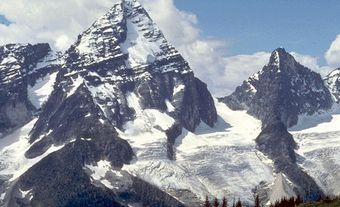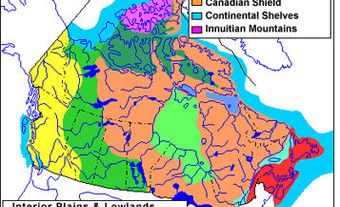
Beringia is a landmass including portions of 3 modern nations (Canada, US and Russia) and extending from the Siberian Kolyma River and Kamchatka Peninsula, through Alaska and Yukon Territory, to the Mackenzie River in the Northwest Territories. Near the centre of the region is Bering Strait, for which it was named. Today, this strait links the Arctic and Pacific oceans, but in the past lowered sea levels, resulting in part from growth of continental glaciers, exposed portions of the continental shelves to form a broad land bridge between northeast Asia and northwest North America.
The importance of Beringia is twofold: it provided a pathway for intercontinental exchanges of plants and animals during glacial periods and for interoceanic exchanges during interglacials; it has been a centre of evolution and has supported apparently unique plant and animal communities. The history of Beringia is important not only in the evolution of landscapes but also in that of plants and animals.
Beringia is a land of great beauty, with the highest mountains in North America overlooking broad plateaus and meandering rivers. It extends from frozen Arctic coasts on the north to Pacific coasts warmed by the Japanese Current on the south. The temperatures range from some of the coldest on the Earth in winter to uncomfortably warm in summer. Twenty-four-hour summer days contrast with long periods of winter darkness.
Because of its aridity, much of Beringia remained unglaciated during the ice ages. The stratigraphy of long sequences of nonglacial sediment exposed at various sites can be correlated with alpine and continental glacial advances elsewhere. Fossils from such sediments are often exceptionally abundant and well preserved. They include pollen grains, plant fossils, invertebrates and vertebrate bones. Studies of fossils and of the sediments in which they occur have permitted tentative reconstructions of paleo-environments in western and eastern Beringia.
Beringia is of special importance in the study of human prehistory since it is most likely the area through which man first entered the western hemisphere, presumably following the migrations of large mammals, known from fossil evidence to have roamed eastward across the Bering Land Bridge. Portions of western Beringia (now eastern Siberia) may have been occupied by humans as early as 35 000 years ago. Artifacts of comparable age have been tentatively identified in eastern Beringia on the basis of broken and butchered mammal bones, but the oldest secure evidence of human occupation in Alaska or Yukon Territory dates to the period 20 000-25 000 years ago.
Permanent settlement of Beringia depended upon the invention and perfection of a complex array of cultural and technological skills. Tailored skin clothing, secure dwellings, control of fire, special methods of food procurement and storage and possibly some form of watercraft to cross large, cold-water bodies were prerequisites of human life in these latitudes. Some writers have suggested that the ancient colonization of Beringia represented a technological achievement equivalent to the penetration of such environments as Antarctica, the deep sea and the moon.

 Share on Facebook
Share on Facebook Share on X
Share on X Share by Email
Share by Email Share on Google Classroom
Share on Google Classroom

